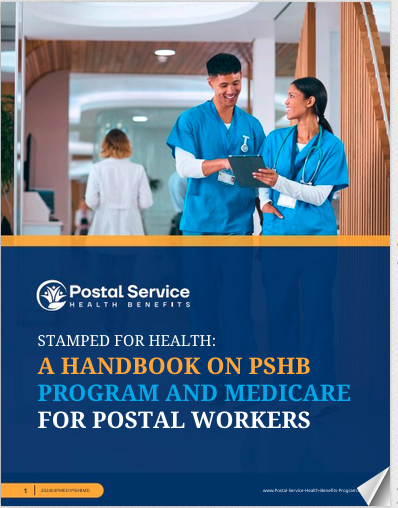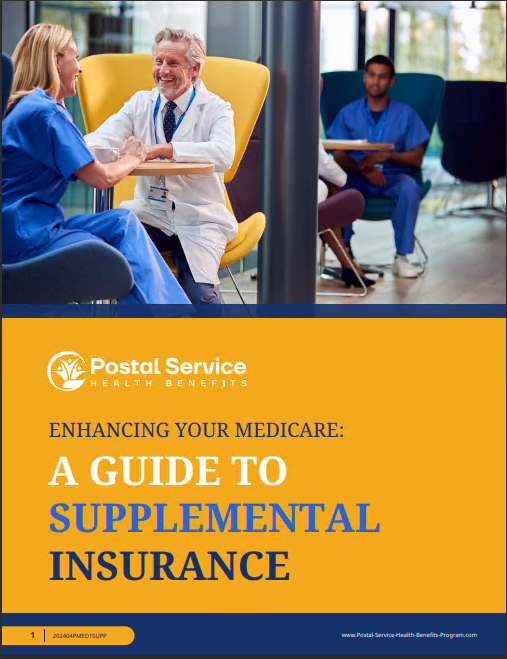Key Takeaways:
- USPS retirees may see changes in their healthcare premiums starting in 2025 due to the Postal Service Health Benefits (PSHB) program and new legislation.
- Understanding the potential implications of this new law can help retirees navigate their healthcare options effectively and avoid unexpected costs.
Healthcare Costs for USPS Retirees: Could This New Law Raise Your Premiums?
As we approach 2025, healthcare for USPS retirees is set to undergo significant changes with the introduction of the Postal Service Health Benefits (PSHB) program. This new system, designed to separate USPS workers’ healthcare from the Federal Employees Health Benefits (FEHB) program, is part of a broader legislative effort aimed at reducing costs for the U.S. Postal Service while improving efficiency in the healthcare system. However, for retirees, the question looms: Could this new law lead to higher premiums?
What is the Postal Service Health Benefits (PSHB) Program?
The PSHB program was established by the Postal Service Reform Act of 2022, which mandates that starting in 2025, all USPS retirees will be transitioned out of the FEHB program and into the PSHB system. This new system is intended to better align with the unique needs of USPS employees and retirees. However, a key aspect of this change is the requirement that eligible retirees must enroll in Medicare Part B, which could affect healthcare costs, particularly premiums.
Currently, USPS retirees can choose to remain in the FEHB without enrolling in Medicare Part B, but that will no longer be the case once the PSHB program is fully implemented. By requiring Medicare enrollment, the government hopes to alleviate some of the financial burdens on the USPS, but retirees might find themselves with higher overall healthcare costs due to the mandatory Medicare Part B premiums.
The Impact of New Legislation on Healthcare Premiums
The changes associated with the PSHB program are rooted in the Postal Service Reform Act, which is designed to reduce the financial strain on the USPS. While this might be a positive move for the organization, retirees could see their healthcare premiums and out-of-pocket costs increase. Under the new law, all USPS retirees who are eligible for Medicare Part B will be required to enroll in it as a condition of maintaining PSHB coverage. This requirement introduces an additional premium for Medicare, which, when combined with the PSHB premiums, could result in higher healthcare costs for retirees.
The legislation also allows for different plan options under the PSHB, some of which may offer more comprehensive benefits but at a higher price point. For those who are used to the FEHB system, this could represent a significant shift in their monthly healthcare expenses.
Will Your Premiums Increase in 2025?
One of the primary concerns for USPS retirees is whether their healthcare premiums will increase with the transition to the PSHB program. The answer to this question depends on several factors, including your current healthcare plan, Medicare enrollment status, and the PSHB plan you choose.
Here are the key considerations that could affect your premiums:
- Medicare Enrollment: If you’re not currently enrolled in Medicare Part B, the new law will require you to sign up starting in 2025. Medicare Part B comes with a monthly premium, which will be an additional cost on top of your PSHB premiums. For those who are already enrolled in Medicare Part B, this change may have less of an impact.
- Plan Options: The PSHB program will offer a range of healthcare plans, some of which will likely have higher premiums but may include more robust coverage. Choosing a plan with comprehensive benefits might result in higher premiums, but could also lower out-of-pocket costs in the long run.
- Out-of-Pocket Costs: Even if you select a plan with a lower premium, out-of-pocket costs such as deductibles, copayments, and coinsurance may increase. It’s important to carefully review each plan’s details to get a full picture of your potential expenses.
Preparing for the PSHB Program: What You Need to Know
The transition to the PSHB program will affect all USPS retirees, so it’s essential to begin preparing now, even though the program won’t take effect until 2025. Here are a few steps you can take to ensure you’re ready for the changes ahead:
-
Review Your Current Healthcare Coverage: If you’re currently covered under the FEHB, take some time to review your plan. Compare the coverage and costs with what the PSHB program may offer. Understanding how the transition will impact your healthcare can help you make informed decisions.
-
Evaluate Your Medicare Status: If you’re not enrolled in Medicare Part B, be aware that you will need to sign up by 2025 to maintain your healthcare coverage under the PSHB program. Enrolling in Medicare will add a premium to your monthly expenses, so it’s important to budget for this cost now.
-
Research PSHB Plan Options: While details about the specific PSHB plans may still be forthcoming, it’s a good idea to familiarize yourself with the types of plans that might be available. Some plans may offer more comprehensive benefits, but at a higher cost. Consider your healthcare needs and financial situation to determine which plan will work best for you.
-
Consult a Licensed Insurance Agent: Navigating the changes in healthcare coverage can be complex, particularly with the introduction of the PSHB program. Consulting with a licensed insurance agent who specializes in retiree healthcare can help you better understand your options and ensure that you’re making the best choices for your situation.
The Role of Medicare in PSHB
Medicare will play a significant role in the PSHB program for USPS retirees, particularly Medicare Part B. With the new requirement that retirees enroll in Medicare Part B, it’s important to understand how this coverage works in conjunction with your PSHB plan. Medicare Part B covers a variety of outpatient services, including doctor visits, lab tests, and preventive care, but it comes with a monthly premium that you’ll need to pay in addition to any PSHB premiums.
Once you’re enrolled in Medicare, it will serve as your primary insurance, meaning Medicare will pay first for most covered services, and your PSHB plan will act as secondary coverage. This arrangement can help reduce out-of-pocket costs, but it also means juggling premiums for both Medicare and the PSHB program. Being prepared for these additional costs will be key to managing your healthcare budget in retirement.
How to Choose the Right PSHB Plan for You
When the PSHB program rolls out in 2025, retirees will be faced with multiple plan options. Choosing the right plan will depend on a number of factors, including your health needs, financial situation, and preferences for coverage. Here are some tips to help you navigate your options:
-
Assess Your Healthcare Needs: Consider your current and anticipated healthcare needs when selecting a plan. If you expect to need frequent medical care or specialist services, it may be worth selecting a plan with more comprehensive coverage, even if the premium is higher.
-
Compare Costs: Review the premiums, deductibles, and copayments for each PSHB plan. While a lower premium may be attractive, it could result in higher out-of-pocket costs down the line. Make sure to balance the costs with the coverage offered.
-
Look for Network Providers: Some PSHB plans may have specific networks of healthcare providers. If you have preferred doctors or specialists, check to see if they are covered under the plan you’re considering.
-
Consider Prescription Drug Coverage: Many retirees rely on prescription medications, so be sure to review the prescription drug coverage available under each PSHB plan. Look for a plan that covers your current medications at a cost you can afford.
Preparing for Healthcare Changes in Retirement
As 2025 approaches, USPS retirees need to be prepared for changes in their healthcare coverage and premiums. The PSHB program represents a shift in how healthcare is provided, and it’s important to stay informed about the details. With proper planning, you can navigate these changes effectively and ensure that you have the coverage you need at a cost you can manage.
Being proactive about your healthcare choices—whether it’s enrolling in Medicare, selecting the right PSHB plan, or consulting with a licensed insurance agent—will help you stay ahead of potential premium increases and ensure that you’re making the best decisions for your retirement years.
Contact Information:
Email: [email protected]
Phone: 4143222106
Bio:
Ali Herron is dedicated to helping seniors navigate the complexities of Medicare, offering tailored solutions that meet their healthcare needs. With a passion for empowering his clients, he provides personalized support to ensure they find the best Medicare plans that suit their unique situations.
In addition to Medicare, Ali Herron specializes in life insurance, mortgage protection, and Index Universal Life (IUL) products, offering peace of mind for families by helping them secure their financial future. Whether you’re planning for retirement, protecting loved ones, or seeking long-term growth potential, Ali Herron is here to provide expert guidance every step of the way.







